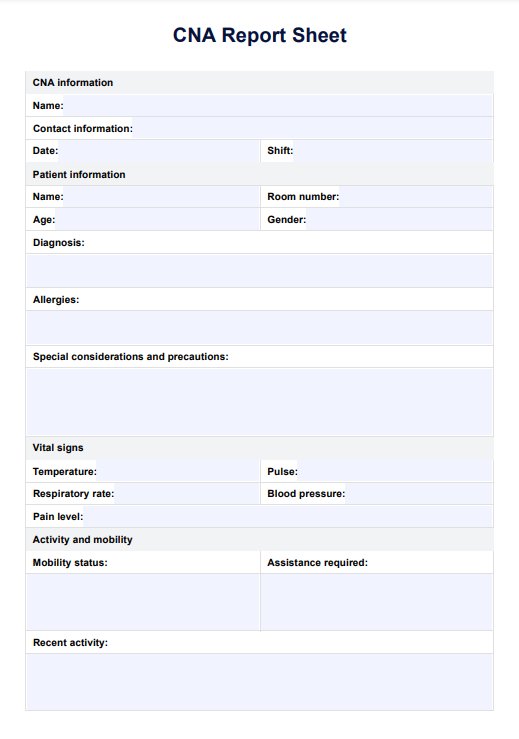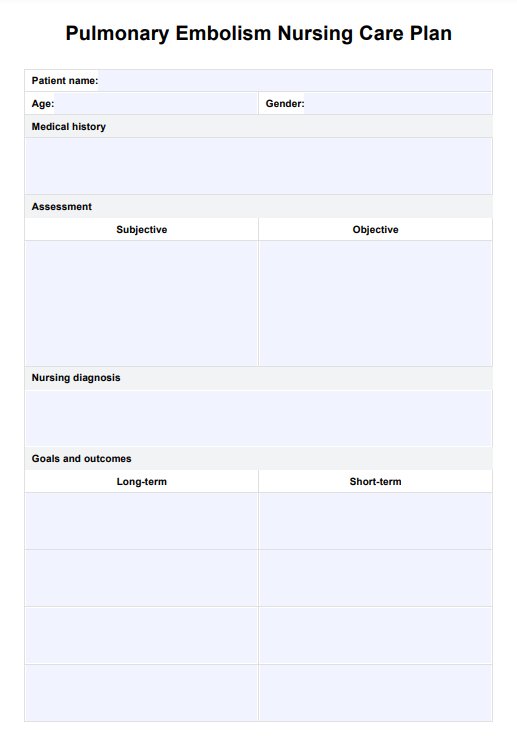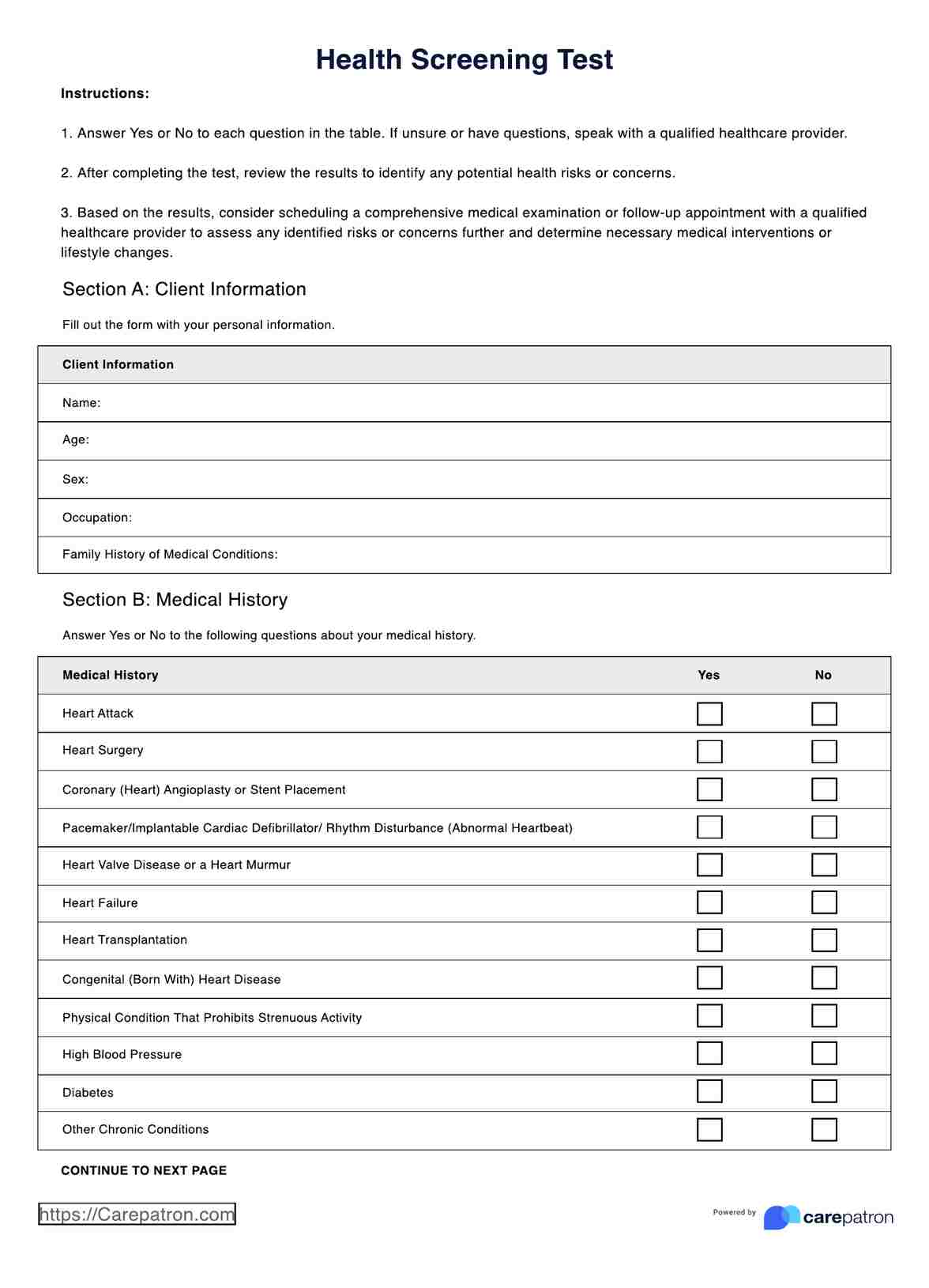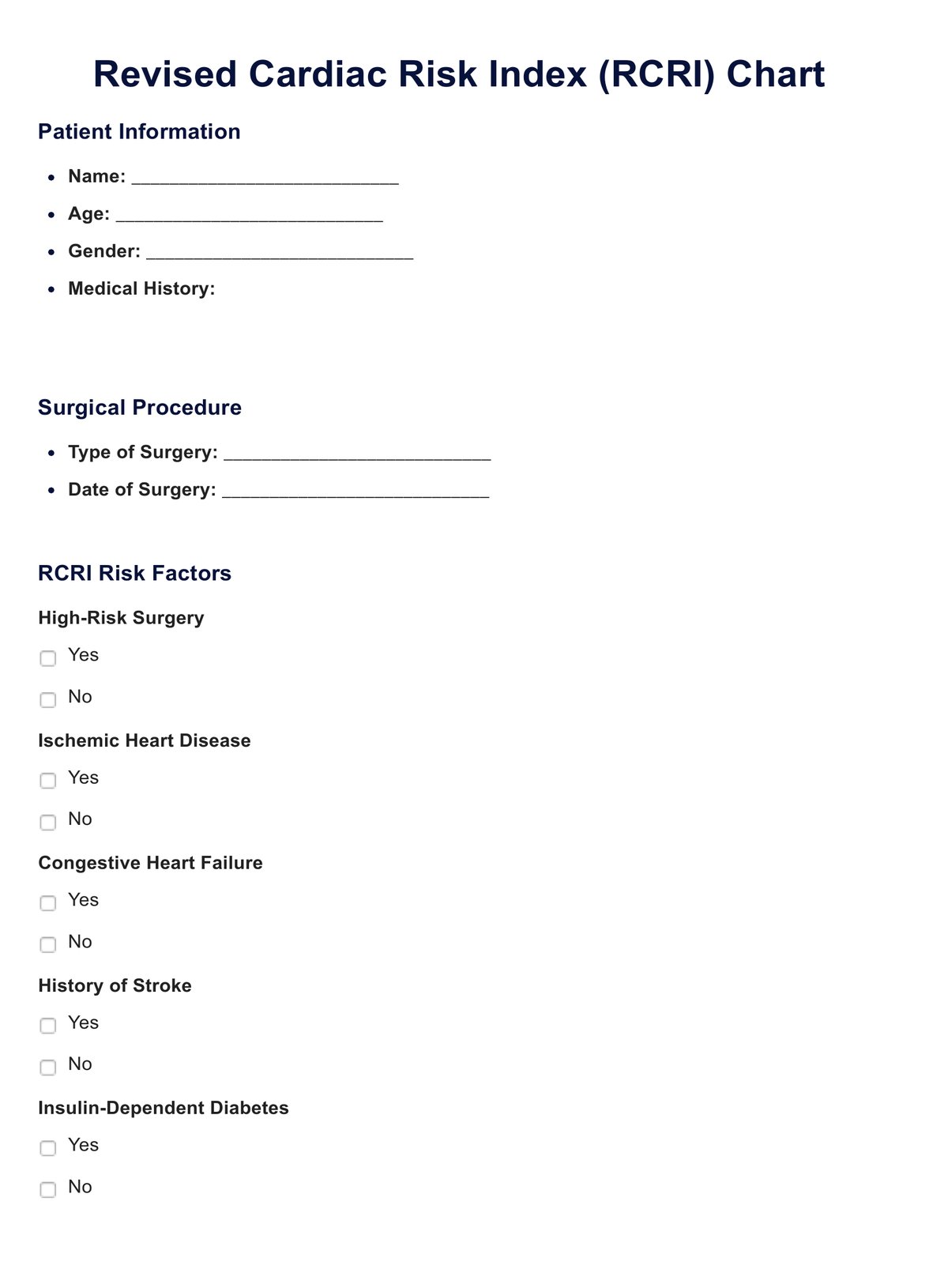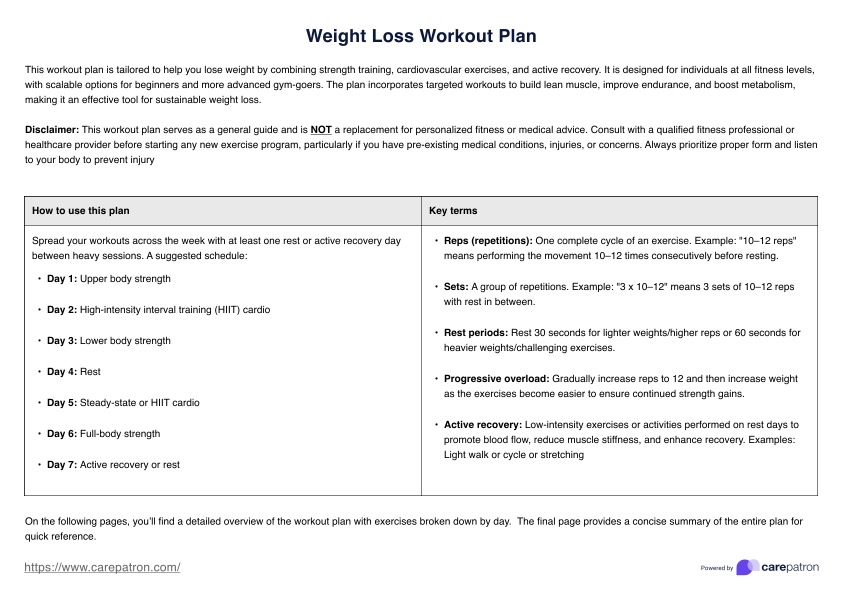NIH Stroke Scale
Utilize this NIH Stroke Scale (NIHSS) to assess the neurological function of your patient who experienced a stroke. Download and edit the template for free.


What is an NIH Stroke Scale (NIHSS)?
The or NIHSS is an assessment tool that quantitatively measures the neurological function, specifically its deficits, of patients who have experienced an acute stroke or are exhibiting signs and symptoms of a stroke. This test is not only a component of the acute stroke assessment but can be used to give practitioners an idea of the possible lesion, degree of recovery, and short and long effects of the stroke on patients.
As for the scale, it’s made up of 11 components:
- Level of Consciousness (LOC), LOC Questions, LOC Commands
- Best Gaze
- Visual
- Facial Palsy
- Motor Arm
- Motor Leg
- Limb Ataxia
- Sensory
- Best language
- Dysarthria
- Extinction and Inattention
Each component comes with instructions and a scoring guide that ranges from 0 to 4, including an “Untestable” option, known as scale definition.
Scoring is as simple as giving a number based on the patient’s response to the instructions you read out loud or reaction to unpleasant stimuli you introduce. You can get a final score when you add all the scores you gave in the 11 components.
One very important thing to note is that you must be both trained and certified in order to administer the NIHSS. This is to ensure consistency and accuracy in results. For more information on the tests and how to obtain a certificate, head to the American Heart Association’s website.
NIH Stroke Scale Template
NIH Stroke Scale Example
How does this NIH Stroke Scale Work?
Step One. Training and Certification
It is essential that before you begin, you take the necessary steps to ensure that you are certified to administer the test. If you haven’t been certified, head to the American Heart Association’s website to undergo training and receive and certificate. Otherwise, double-check if you’re due for recertification, generally 6 months to a year after your last certification.
Step Two. Access and Download the Template
Search for “NIH Stroke Scale” on Carepatron’s community template library on the app or website. Click the “Use template” button to download and edit on your local PDF editor or on Carepatron.
Step Three. Fill out the Form
Before starting, it’s best that you provide the following pieces of information located on the top of the template. These are the date, hospital, patient’s name, date of birth, and your name and signature since you’re the physician/nurse in charge.
Afterward, remember to add the date and time and ensure you’re writing your score in the appropriate column.
Step Four. Conduct the Test
Except for the first scale, where you simply have to observe your patient, you will have your patient follow the instructions from component 1b onwards on the template. After every step, it’s recommended that you write the score down immediately to prevent confusion or forgetfulness.
Step Five. Compute the Final Score and Proceed with the Next Steps
Once you’ve acquired the scores for the scales, add them to produce a total score which will be used in interpretation and intervention.
How to Score the NIHSS
The scoring scale ranges from 0 to 4, with 0 as normal and the highest score, which may either be 2, 3, or 4, as severely impaired. Scoring is as simple as looking at the patient’s response and choosing the description and, consequently, the corresponding number that matches their movement or lack thereof.
When to use this NIH Stroke Test?
It’s recommended that you use the template and administer the NIH Stroke Scale Test only when:
- The stroke has occurred, and the patient is already being cared for, whether conscious or unconscious.
- You’re in a hospital setting, preferably bedside. Should emergency situations require that you do the test off-site or away from the patient, it can be done via video call with someone who is also qualified to assist you.
- You have enough time to assess the patient. Should you want a shorter but equally useful test, you may opt to use a modified version of the NIH Stroke Scale.
To add, even though there is an average test duration, it’s best that you conduct the test at a pace that you and your patient are more comfortable with. Any coaching or assumptions made to speed up the response or reaction is unethical and will not produce accurate test results.
Who is this NIH Stroke Scale PDF for?
Anyone who has undergone training and is certified - or recertified - may download a PDF copy of the NIH Stroke Scale Test.
To be more specific, among those who are most likely to have a certification who will find our template useful are:
- EMS professionals such as medical responders, advanced EMT paramedics, nurses, and ER doctors/physicians
- Neurologists more specifically vascular neurologists
- Neurosurgeons
- Clinical Researchers and Medical Students

Benefits of a Free NIH Stroke Assessment
Streamlined Processes
Having a ready-made template on hand can streamline the process of completing and administering the acute stroke assessment, including the NIH Stroke Scale.
Standardization
With a standardized test such as the NIH Stroke Scale, involved practitioners will most likely be on the same page when determining the patient’s severity. Moreover, testing across patients will be more consistent and accurate, and practitioners in charge of the treatment plan moving forward can formulate an effective plan at the top of their heads.
Establish a Baseline for Comparison
As seen in the template, practitioners must conduct the test more than once. However, the first administration is crucial since it’ll be the baseline for comparison. With this particular template, you are given a reminder and a specific column just for establishing a baseline.
Tracks Progress
Aside from a baseline, the template also comes with 3 additional columns where you can track the progress of your patient and determine the pain severity hours after, possibly post-intervention, and see if there are any further tests, assessments, or medications needed.
Improves Communication and Understanding
Helping a patient with their post-stroke recovery isn’t a one-person job. Hence, it’s essential that communication flows easily among practitioners and results are easy to understand. If you save your filled-out template on Carepatron, involved parties can access your test. They can use it as a resource for their own patient care strategy.
Commonly asked questions
Interpretation is pretty straightforward. The higher the total number, the more severely impaired your patient is. Generally, anything higher than 25 should be a cause for concern.
The NIH Stroke Scale measures stroke severity. More specifically, the patient’s neurological function post-stroke.
Administering the NIH Stroke Scale is as simple as following the instructions we provided above and asking the patients to follow what’s written on the template.


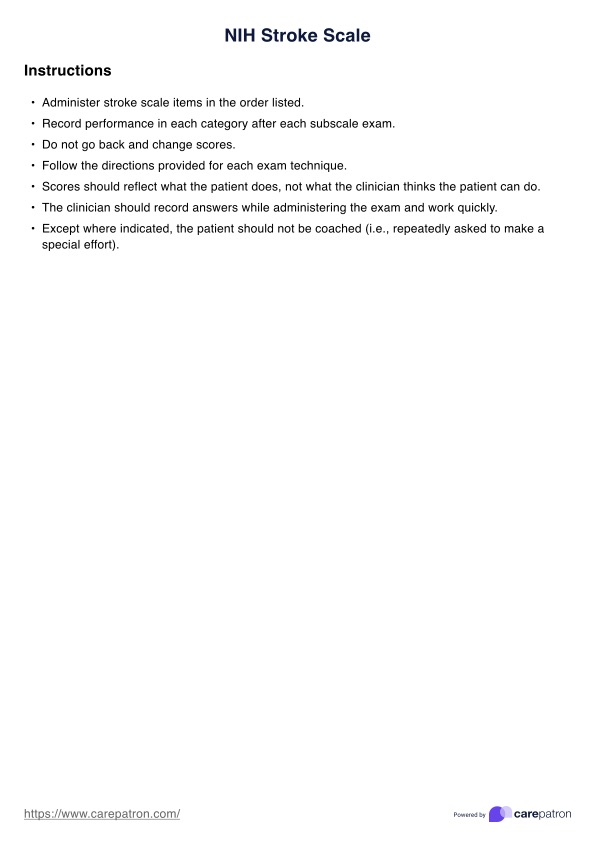
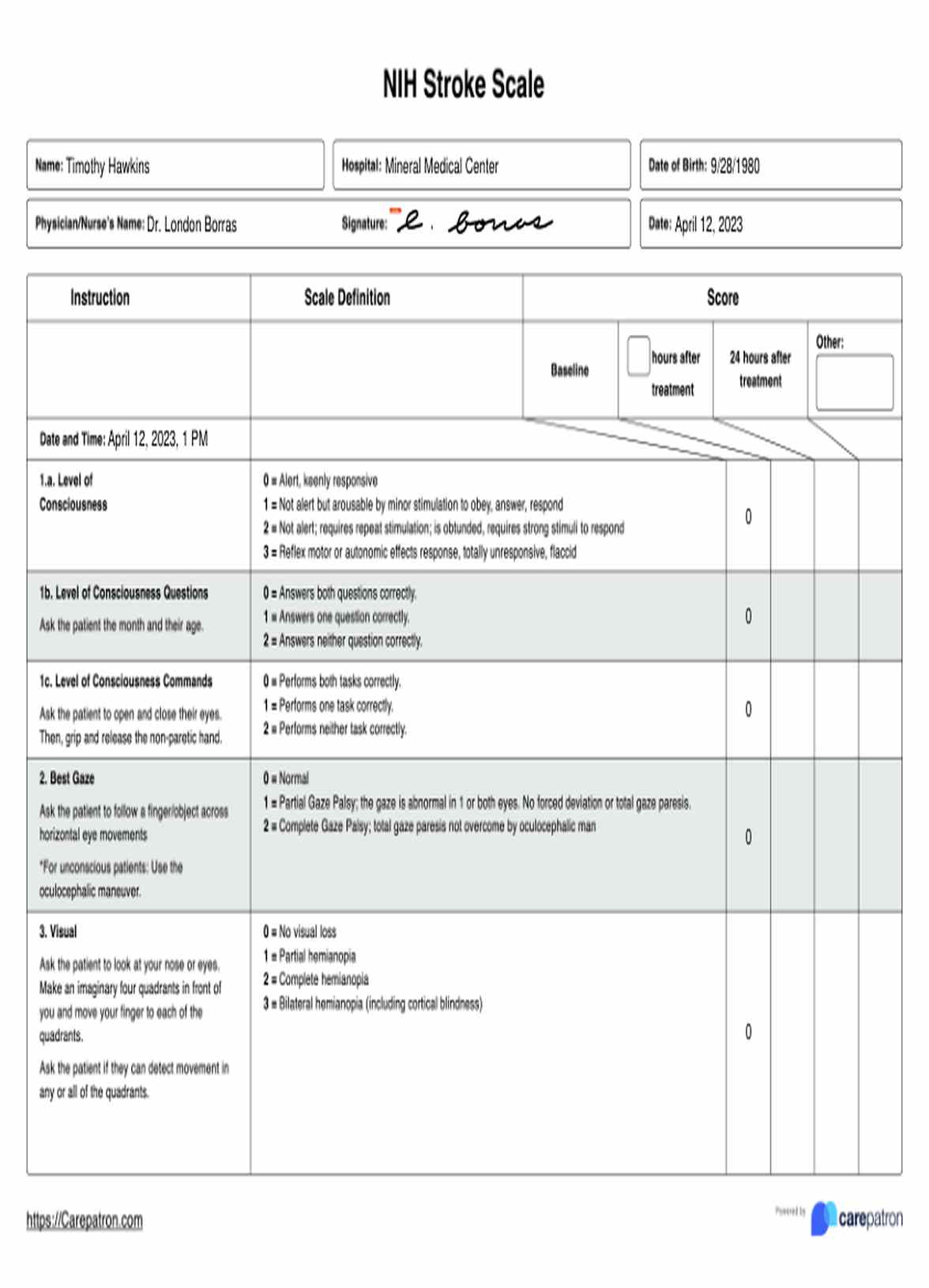












-template.jpg)



























































































